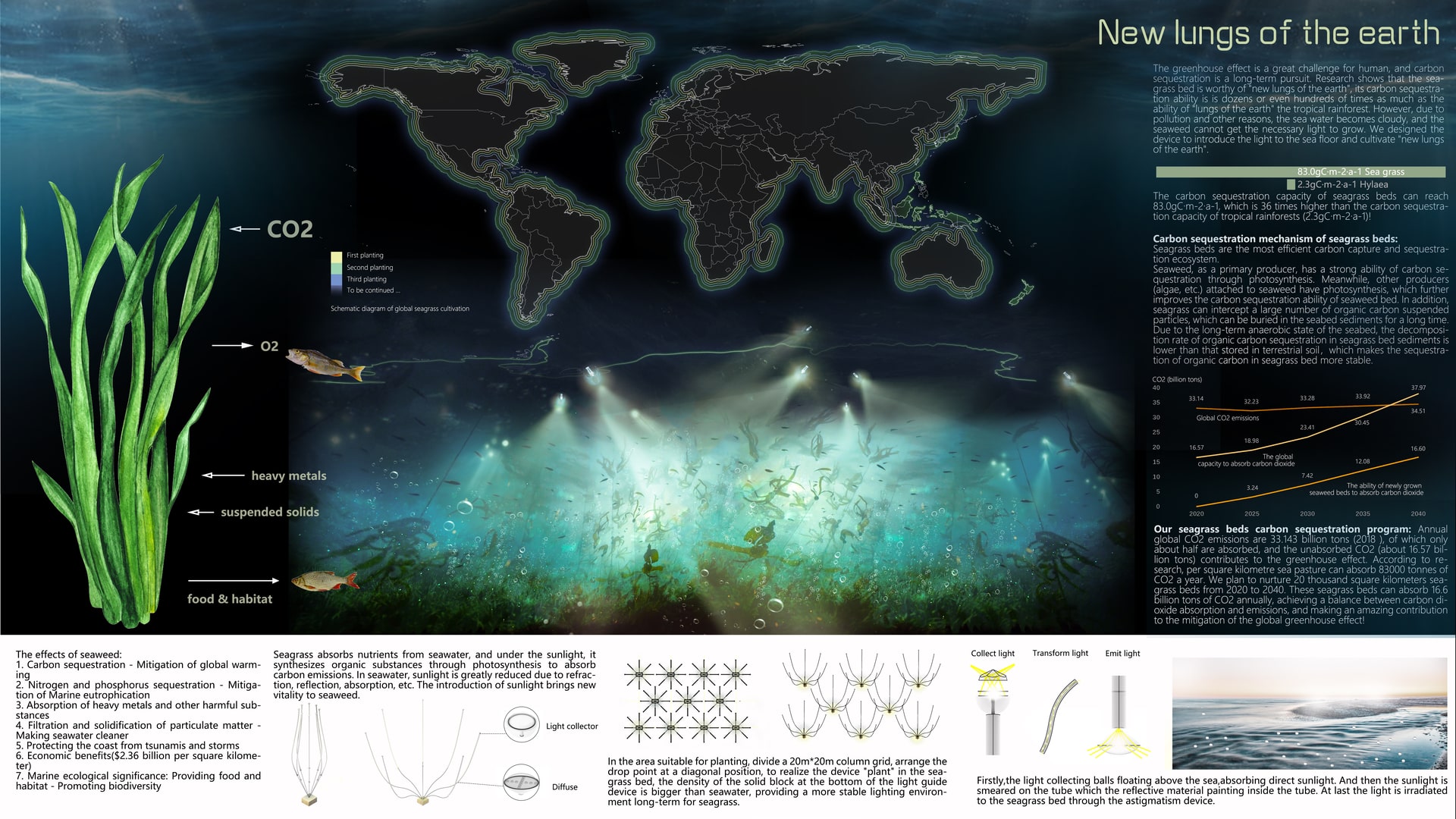Project Description
New lungs of the earth The greenhouse effect is a great challenge for human, and carbon sequestration is a long-term pursuit. Research shows that the seagrass bed is worthy of "new lungs of the earth", its carbon sequestration ability is is dozens or even hundreds of times as much as the ability of "lungs of the earth" the tropical rainforest. However, due to pollution and other reasons, the sea water becomes cloudy, and the seaweed cannot get the necessary light to grow. We designed the device to introduce the light to the sea floor and cultivate "new lungs of the earth". The carbon sequestration capacity of seagrass beds can reach 83.0gC·m-2·a-1, which is 36 times higher than the carbon sequestration capacity of tropical rainforests (2.3gC·m-2·a-1)! Now,let's see why. Seagrass beds are the most efficient carbon capture and sequestration ecosystem, with strong carbon sequestration ability and more stable carbon sequestration. Seaweed, as a primary producer, has a strong ability of carbon sequestration through photosynthesis. Meanwhile, other producers (algae, etc.) attached to seaweed have photosynthesis, which further improves the carbon sequestration ability of seaweed bed. In addition, seagrass has another important way of carbon sequestration: seagrass can intercept a large number of organic carbon suspended particles, which can be buried in the seabed sediments for a long time. Due to the long-term anaerobic state of the seabed, the decomposition rate of organic carbon sequestration in seagrass bed sediments is lower than that stored in terrestrial soil,which makes the sequestration of organic carbon in seagrass bed more stable. Seagrass absorbs nutrients from seawater, and under the sunlight, it synthesizes organic substances through photosynthesis to absorb carbon emissions. In seawater, sunlight is greatly reduced due to refraction, reflection, absorption, etc. Using the daylight collector which designed by us can bring the sunlight back to the seagrass. In the area suitable for planting, divide a 20m*20m column grid, arrange the drop point at a diagonal position, to realize the device "plant" in the seagrass bed, the density of the solid block at the bottom of the light guide device is bigger than seawater, providing a more stable lighting environment long-term for seagrass. Firstly,the light collecting balls floating above the sea,absorbing direct sunlight. And then the sunlight is smeared on the tube which the reflective material painting inside the tube. At last the light is irradiated to the seagrass bed through the astigmatism device. Our seagrass beds carbon sequestration program: Annual global CO2 emissions are 33.143 billion tons (2018 data), of which only about half are absorbed, and the unabsorbed CO2 (about 16.57 billion tons) contributes to the greenhouse effect. According to research, per square kilometre sea pasture can absorb 83000 tonnes of carbon dioxide a year. Every year we plan to foster 10 thousand square kilometers of seaweed bed. We will nurture 20 thousand square kilometers seagrass beds from 2020 to 2040. These seagrass beds can absorb 16.6 billion tons of CO2 annually, achieving a balance between carbon dioxide absorption and emissions, and making an amazing contribution to the mitigation of the global greenhouse effect!
